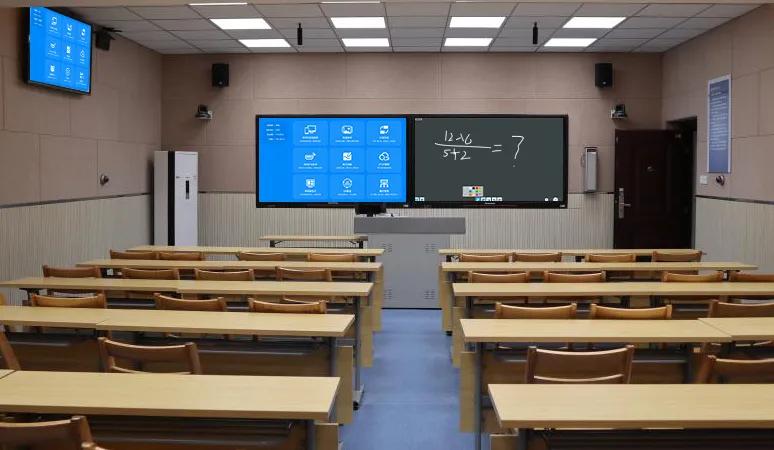Introduction to the core functions and application scenarios of BJCast Multimedia Collaboration System BJ60S
The BJ60S multimedia collaboration system launched by BJCast Internet is a solution for the modernization of smart classrooms in colleges and universities. It aims to break the single teaching mode of traditional classrooms and improve teaching efficiency and interactive experience through wireless screen projection, multi-screen interaction, remote collaboration and other technologies. The following are its core functions, application scenarios and value for college classroom transformation:
一、BJ60S core function
- Wireless screen projection and multi-screen interaction
- Support teachers/students through mobile phones, tablets, notebooks, one-click wireless screen projection, to the classroom large screen (no cable), compatible with Windows, macOS, Android, iOS present on all major platforms.
- Multi-end point same-screen display: support 4-screen, 9-screen and other multi-screen comparison, convenient for group discussion or work display。
- bidirectional cooperative control
- Teachers can remotely control the student screen for comments, and students can also operate the speaker screen in reverse (with permission authorization required) to enhance classroom interactivity.
- 4K ultra high definition transmission
- Supports 4K video, PPT animation, 3D modeling, and other content, with no delay transmission, and adapts to high-precision teaching scenarios (such as medical anatomy and engineering design).
- Cloud management and recording
- Classroom content can be recorded in real time and uploaded to the cloud for students to play back after class; administrators can remotely manage the status of school-wide equipment.
- Cross-campus/distance learning
- Through the built-in remote collaboration module of BJ60S, students in different campus classrooms or at home can be synchronously connected to the classroom (with video conferencing software).

二、The Transformation Value of Smart Classrooms in Colleges and Universities
1. Replace the traditional “blackboard + projection” mode
- Eliminate VGA/HDMI cable constraints, allowing teachers to cast screens anywhere in the classroom, allowing students to share content by scanning the code.
- Support large touch screen or electronic whiteboard to achieve digital preservation of blackboard books.
2. Improve teaching efficiency
- Fast device switching: Teachers don’t need to repeatedly plug and unplug cables, switching between different students’ screens within 3 seconds.
- Group collaboration: Student groups quickly display results through wireless screen projection, and teachers comment in real time.
3. Compatible with existing equipment
- No need to replace the original display equipment (e.g. projector, TV), it can be upgraded to a smart classroom through the BJ60S host.
4. Data Security and Rights Management
- Support the unified authentication of school LDAP accounts, and screen projection requires permission approval to prevent irrelevant content from interfering with the classroom.
三、Typical application scenarios
- Theory course
- Teachers screen PPT/PDF, students scan the code to upload notes or questions, and class content is archived in real time.
- Experimental teaching
- The biological/chemical experiment was projected through the mobile phone camera, and the whole class observed the microscopic operation synchronously.
- Art and design courses
- Students’ flat-panel paintings are directly projected on the screen, and teachers correct the color scheme and composition in real time.
- cross-campus open class
- The main classroom screen is synchronized to the branch campus area, and students in many places interact through screen projection.